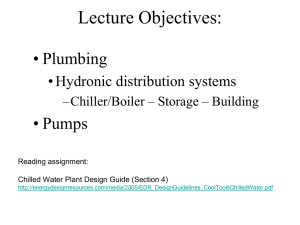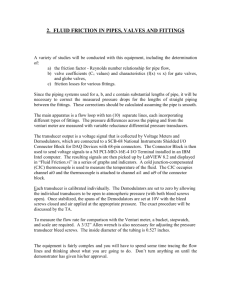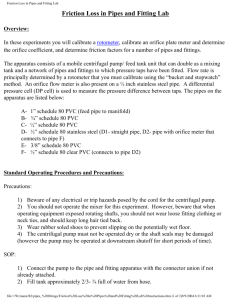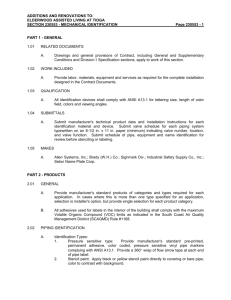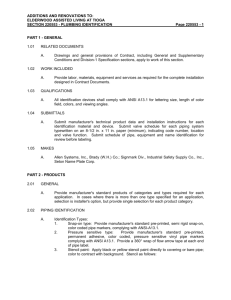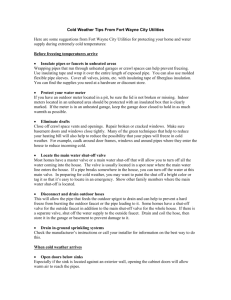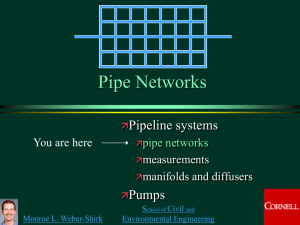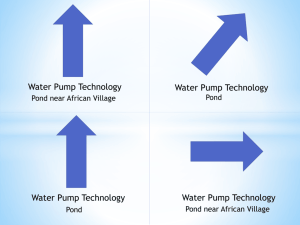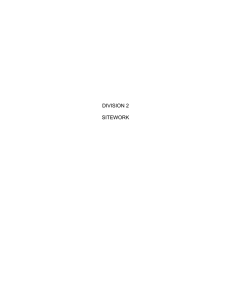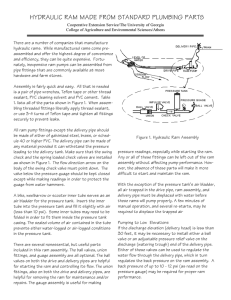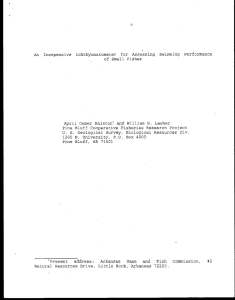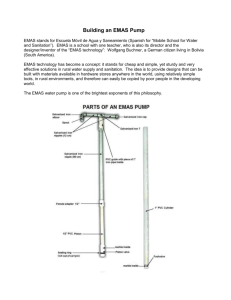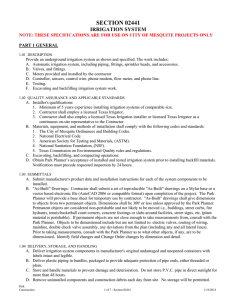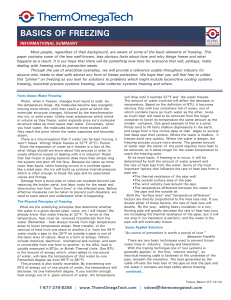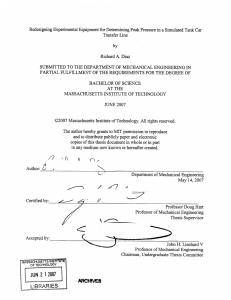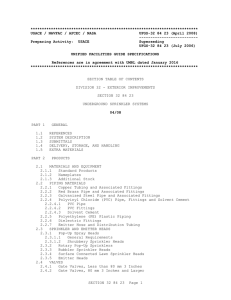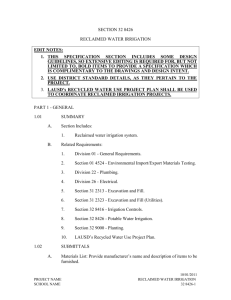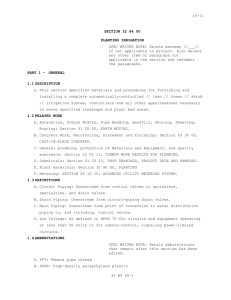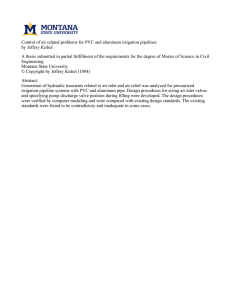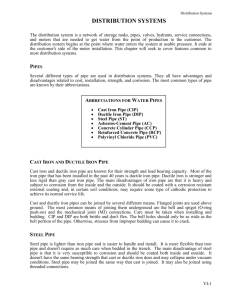Overview:
advertisement
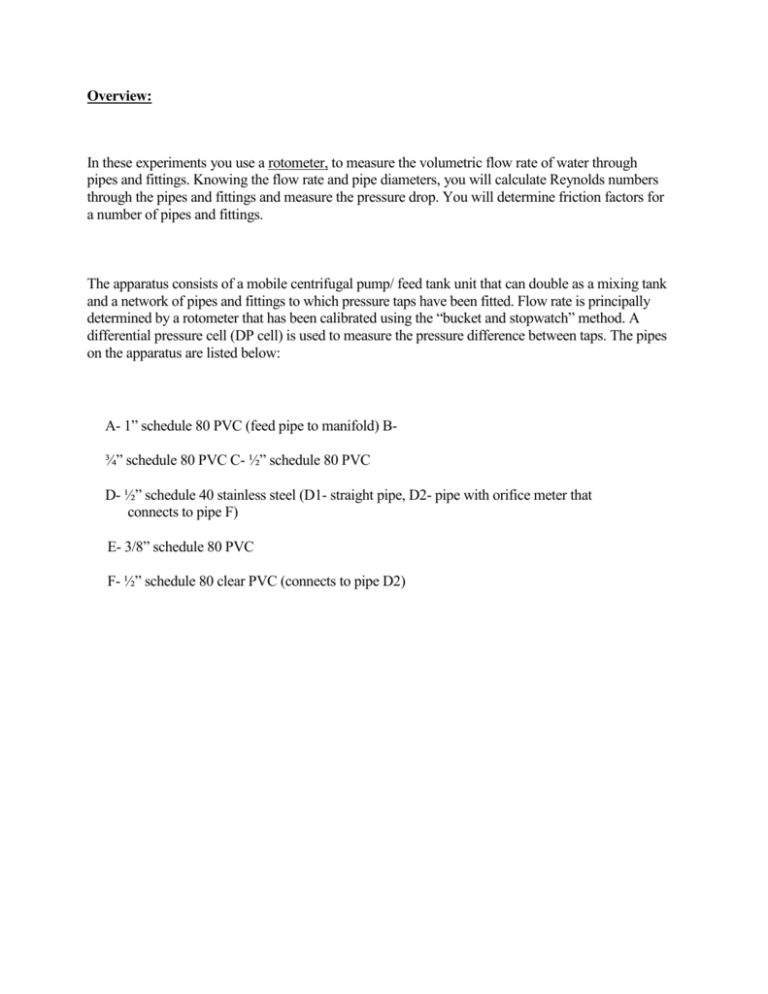
Overview: In these experiments you use a rotometer, to measure the volumetric flow rate of water through pipes and fittings. Knowing the flow rate and pipe diameters, you will calculate Reynolds numbers through the pipes and fittings and measure the pressure drop. You will determine friction factors for a number of pipes and fittings. The apparatus consists of a mobile centrifugal pump/ feed tank unit that can double as a mixing tank and a network of pipes and fittings to which pressure taps have been fitted. Flow rate is principally determined by a rotometer that has been calibrated using the “bucket and stopwatch” method. A differential pressure cell (DP cell) is used to measure the pressure difference between taps. The pipes on the apparatus are listed below: A- 1” schedule 80 PVC (feed pipe to manifold) B¾” schedule 80 PVC C- ½” schedule 80 PVC D- ½” schedule 40 stainless steel (D1- straight pipe, D2- pipe with orifice meter that connects to pipe F) E- 3/8” schedule 80 PVC F- ½” schedule 80 clear PVC (connects to pipe D2) Standard Operating Procedures and Precautions: Precautions: 1) Beware of any electrical or trip hazards posed by the cord for the centrifugal pump. 2) You should not operate the mixer for this experiment. However, beware that when operating equipment exposed rotating shafts, you should not wear loose fitting clothing or neck ties, and should keep long hair tied back. 3) Wear rubber soled shoes to prevent slipping on the potentially wet floor. 4) The centrifugal pump must not be operated dry or the shaft seals may be damaged (however the pump may be operated at downstream shutoff for short periods of time). SOP: 1) Connect the pump to the pipe and fitting apparatus with the connector union if not already attached. 2) Make sure all drain valves are closed. 3) Fill tank approximately 2/3- ¾ full of water from hose. 4) Make sure the return hose is directed into the top of the feed tank. 5) Make sure the valve feeding the centrifugal pump is open. 6) Close all ball valves on the feed manifold except for the valves on pipes A and C. 7) Close the globe valve upstream from the rotometer. 8) Use the motor starter switch (located on tank support frame) to start the pump motor. 9) Open the globe valve until the rotometer shows desired flow rate. 10) Turn on DP cell power with the switch on the wall behind the pipes and below the DP cell. Assignment: 1) Lab: Measure water temperature- you will need to know this to look up the viscosity and density of water. 2) Lab: Read the rotometer scale at the largest diameter of the float to obtain the % maximum flow. Data Analysis: The rotometer is built so that the relationship between “% full scale flow” and volumetric flow rate Q (GPM) is linear. Use the relationship: Q (GPM) = 0.1756 (% Flow) to calculate flow rate. From (1) and (2) calculate the Reynolds number. 3) Lab: Open the valve and measure the pressure drop across pipe C. Use a flow rate of 50, 60, and 70 % full scale flow for Teams 1, 2 and 3 respectively. Data Analysis: Determine the friction factor for pipe C using Figure 10.8 (and/or eqn. 10.26) and Table 10.2 in Crowe. Be sure to use the proper pipe diameter based on schedule number in your calculations (see on-line reference). . Compare the calculated pressure drop to the measured pressure drop. 4) Lab: Measure the pressure drop for the 90 degree elbow in pipe F at the highest measurable flow rate possible (make sure the in-line globe valve is all the way open for this part). Data Analysis: Find the experimental “K-factor” for the 90 degree elbow and compare to those predicted in your references. 5) Lab: Measure the pressure drop for the globe valve in pipe D2 with the valve in the fully open and half open positions. The valve opening is directly proportional to the stem travel which is in turn directly proportional to the number of valve turns. Teams 1, 2, and 3 use flow rates of 30, 40, and 50% respectively. You will need to adjust the main valve to keep the flow rate constant as you close the in-line globe valve. Data Analysis: Calculate the valve coefficient for each setting and compare to those given in your references.
